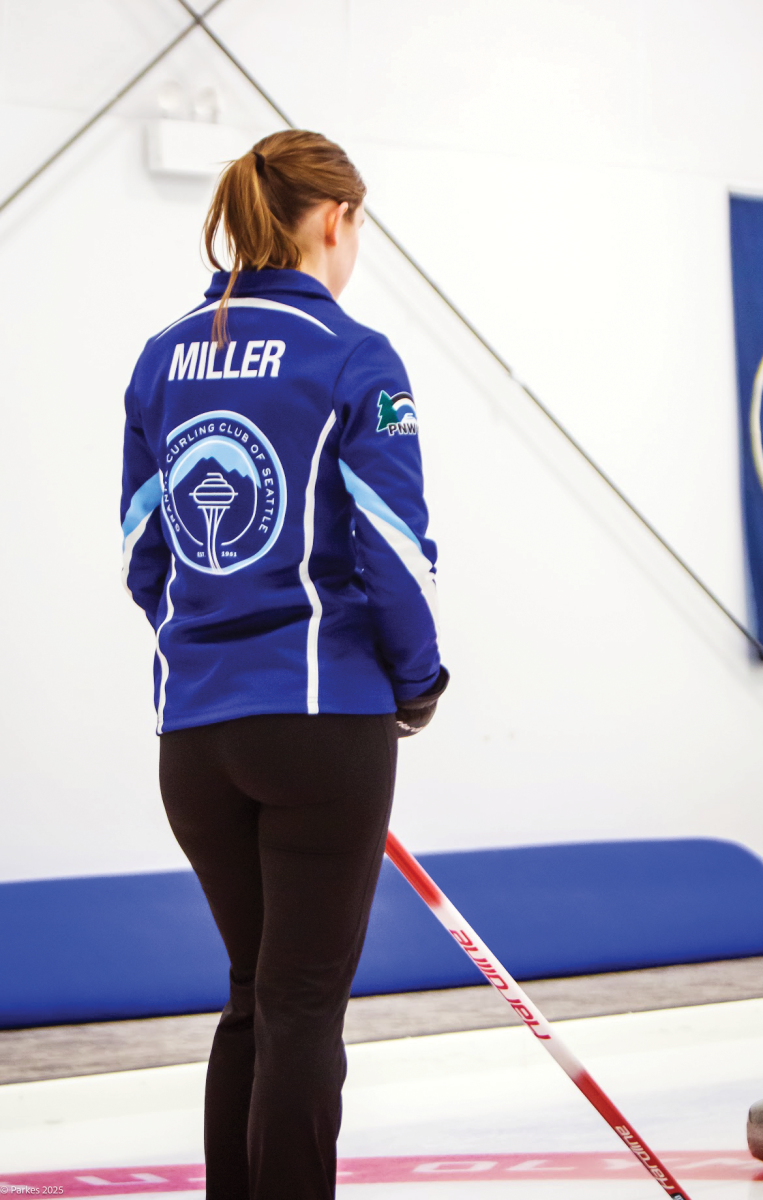Just beyond a blue-carpeted entry space, through a squeaky wooden door, a large room is dominated by a sheet of ice divided by small wooden beams into five strips. The lively, warehouse-like space is filled with laughter and shouts of “line” and “sweep” from teenagers donning brooms and specialized, low-friction shoes. As Bruno Mars’ “Leave the Door Open” plays through an oversized speaker, a rock slides across the ice, passing seamlessly between two other granite stones to hit a third with a muted thump. It might seem strange, but this is no more than an average Wednesday evening for Greta M. ‘28.
Most American’s barely know what curling — think Winter Olympics, not styling your hair — even is. Greta first learned about it during Midwinter Break in 7th grade, when she went skiing in Sun Peaks. The Canadian womens’ championships were on TV, so she and her family “watched them every night after [they] were done skiing. And then [they] found out they were in Kamloops, which was really near where [they] were staying.” They went to watch a game, and Greta decided she wanted to give it a try.
The only curling club in Washington, the Granite Curling Club, happens to be only a five minute drive from Lakeside. The goal of the game is to get closer to the bullseye of a target in the ice than your opponent. To do so, four-player teams take turns sliding or “throwing” a 42 pound granite stone. The two players who aren’t currently throwing or telling the thrower where to aim “sweep” the rock, creating friction and, in turn, heat that melts the ice and helps the rock travel farther. But it isn’t just about who can throw closest to the center; the game involves a careful strategy with over 16 rocks — eight from each team, repeated over eight “ends.” A shot missed by as little as an inch, or a misstep in planning and a poor call, could have a massive impact on the rest of the end. These in-game decisions aren’t managed by a coach, but by traditionally the best player, called the “skip.”
Greta signed up for an introductory lesson in eighth grade, called a “Learn to Curl,” but for her, it was always going to be just the first step. She explained, “I think I was already committed before I did it and there was nothing in the Learn to Curl that made me think ‘Oh, this would be really bad’ or ‘I wouldn’t enjoy doing this.’” That thinking took her far, and that spring, she decided to join an Under Over League, where kids play on a team with adults. Jumping straight into competitive play immediately after her first lesson was a bold step, and she quickly found out she had a lot to learn. As she put it, she “kind of sold,” but that didn’t deter her from pushing herself to go farther. When her mom joked about some summer camps she had heard about, Greta decided to “just go for it and do one.” She said, “I was by far the worst person [at the camps], which was kind of stressful, but I also learned a lot.” When it came time for the season to start, she chose to join an advanced league, even though she knew it might mean more time being the worst in the room. Much to her surprise, though, she wasn’t. Instead, she quickly rose to the top.
This year, Greta was the skip for a team which she led in the US Under 18 National Championships. Now, she practices more than three times a week with the vision of winning the whole thing in a few years, when she has more experience under her belt. Competing at a high level adds a lot more pressure than the over under league play, especially for the skip, who plays the biggest role in strategy and throws last, with the end and sometimes the game on the line. “You have to be able to predict every possible outcome of your shots,” she said, “and weigh risk versus reward — and do it really quickly, too, because you’re being timed[…] There’s no other part of my life where I’m always that concentrated on one thing.”
I had the privilege of playing on her team this season, and her composure really impressed me. We were the worst team in our division and, against some of the best teams in the country, took some really frustrating losses. But whether we were down a nearly insurmountable score against the top-ranked team or tied with a team we hoped to beat, she stayed calm, retained her confidence, and called a strong game.
Looking forward, this is only the beginning for Greta. She hopes to continue in the junior program, and eventually in college. After that, whether she competes at a National,or even Olympic level, it will always be one of her passions. “I wouldn’t choose to move to anywhere where there wasn’t a curling club,” she told me, “so I would sort of center my life around curling in that way.” Curling inspired her to take risks, in a way that she previously hadn’t, and so far, she hasn’t regretted one. Whether she goes on to play recreationally or make a play for Olympic gold, this skill will take her far. As she put it, “People always tell you to take risks, and you’re like, ‘Ha ha, whatever,’ but they often lead to very valuable experiences.”


